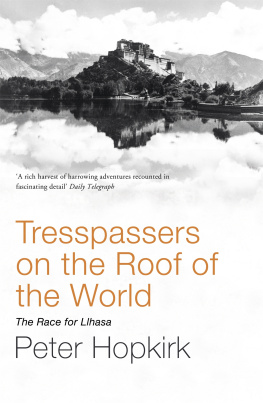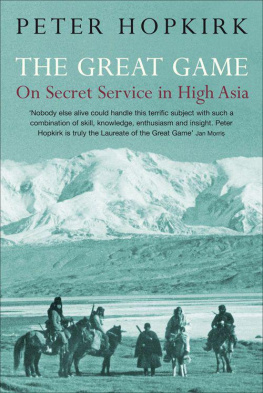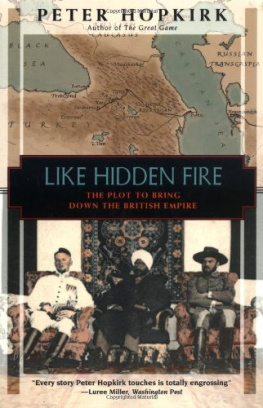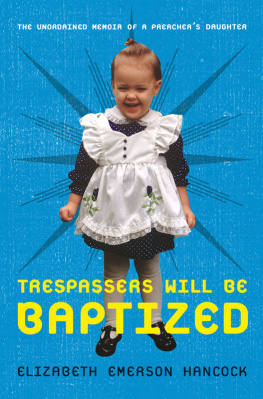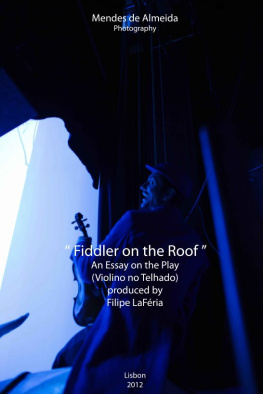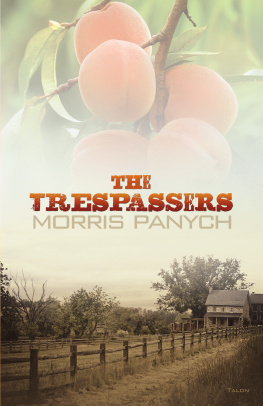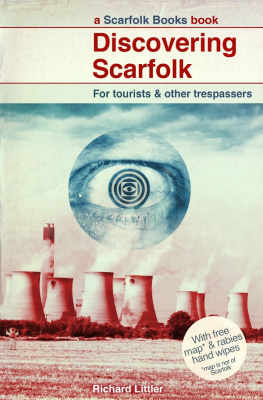Peter Hopkirk - Trespassers on the Roof of the World
Here you can read online Peter Hopkirk - Trespassers on the Roof of the World full text of the book (entire story) in english for free. Download pdf and epub, get meaning, cover and reviews about this ebook. publisher: Hodder, genre: Detective and thriller. Description of the work, (preface) as well as reviews are available. Best literature library LitArk.com created for fans of good reading and offers a wide selection of genres:
Romance novel
Science fiction
Adventure
Detective
Science
History
Home and family
Prose
Art
Politics
Computer
Non-fiction
Religion
Business
Children
Humor
Choose a favorite category and find really read worthwhile books. Enjoy immersion in the world of imagination, feel the emotions of the characters or learn something new for yourself, make an fascinating discovery.
- Book:Trespassers on the Roof of the World
- Author:
- Publisher:Hodder
- Genre:
- Rating:4 / 5
- Favourites:Add to favourites
- Your mark:
- 80
- 1
- 2
- 3
- 4
- 5
Trespassers on the Roof of the World: summary, description and annotation
We offer to read an annotation, description, summary or preface (depends on what the author of the book "Trespassers on the Roof of the World" wrote himself). If you haven't found the necessary information about the book — write in the comments, we will try to find it.
Trespassers on the Roof of the World — read online for free the complete book (whole text) full work
Below is the text of the book, divided by pages. System saving the place of the last page read, allows you to conveniently read the book "Trespassers on the Roof of the World" online for free, without having to search again every time where you left off. Put a bookmark, and you can go to the page where you finished reading at any time.
Font size:
Interval:
Bookmark:


www.johnmurray.co.uk
First published in Great Britain in 1982 by John Murray (Publishers)
An Hachette UK Company
Copyright The Estate of Peter Hopkirk 1982
The moral right of the Author of the Work has been asserted in accordance with the Copyright, Designs and Patents Act 1988.
All rights reserved.
No part of this publication may be reproduced, stored in a retrieval system, or transmitted, in any form or by any means without the prior written permission of the publisher.
A CIP catalogue record for this title is available from the British Library
ISBN 978-1-84854-726-1
John Murray (Publishers)
Carmelite House
50 Victoria Embankment
London EC4Y 0DZ
www.johnmurray.co.uk
Contents
In piecing together this narrative my greatest debt must be to those remarkable men and women all long dead and little remembered who took part in the race to reach Lhasa. Their adventures and misadventures, as related at the time, provide much of the books drama. I owe a similar debt to those other travellers whose trespasses into Tibet also form part of the story. Without their first-hand accounts of what befell them in this wild and remote Asian backwater this book could not have been written. All these sources, today long forgotten and out of print, are acknowledged in my bibliography.
For my knowledge of the political and diplomatic history of the period I owe much to Professor Alastair Lambs works, particularly to his Britain and Chinese Central Asia, a book which no one writing on modern Tibet can afford to ignore. Like him I have spent illuminating hours combing the so-called political and secret files, and I am grateful to the staff of the India Office Library and the Public Records Office for their help. For my understanding of more recent events in Tibet, I found Hugh Richardsons Tibet and its History invaluable, its author having personally witnessed many of them and participated in not a few.
The individual to whom I owe most, however, is my wife Kath whose throughness in all things has contributed so much to this book at every stage. Others to whom my gratitude is due for assistance include Dr Michael Aris of Wolfson College, Oxford, and Zara Fleming, formerly of the Victoria and Albert Museum, both Tibetan specialists. I am also indebted to Mrs Joan Mary Jehu of Fulham who, as a pre-war teenager, was the second Englishwoman ever to visit Lhasa (her mother being the first), and her memories of it were a valuable source of insight to me. My gratitude, too, is due to Janina Slater, once of Peking, now of The Times, who battled against the clock to produce the final typescript and who suggested a number of useful clarifications.
Finally I must thank my publisher and editor, John R. Murray, without whose constant encouragement this book would have remained no more than a synopsis scribbled on the back of an Income Tax demand.



This book tells the story often bizarre, sometimes tragic, frequently hair-raising of the prising open of Tibet by an inquisitive outside world. For no country has ever challenged mans imagination quite like this mysterious kingdom locked away in the heart of Central Asia. Inhabited by a people whose only wheel was the prayer-wheel, and ruled over by a God-king, Tibet has always been the stuff of travellers dreams. In a world with few secrets left, here almost anything still seemed possible.
Although both Herodotus and Ptolemy had heard tales of a shadowy land beyond the Himalayas, it was not until the fourteenth century, when a Franciscan traveller named Friar Odoric claimed to have stumbled on it, that the first description of Tibet reached the West. Whether he really set foot there, or merely heard tales of it as he passed through Asia, is still disputed by historians. But his account of Lhasa, a lurid mixture of truth and fantasy, was to bring others in search of what some believed might be the legendary Christian kingdom of Prester John. Ever since, this inaccessible land has lured men and women to face almost any peril or hardship in their efforts to get there.
At first the Tibetans made no attempt to prevent travellers from the West from crossing their frontiers and even visiting Lhasa. For only a handful, mostly Jesuits and Franciscans, had managed to penetrate Tibets massive natural defences or run the gauntlet of murderous tribes guarding its approaches. But then as Britain and Russia, the new great powers in Asia, began to expand their empires, edging ever closer to Tibets ill-guarded frontiers, the Tibetans took fright, fearing for their way of life and religion, not to say their gold-fields. From that moment this strange (to everyone but the Tibetans) mediaeval kingdom became a forbidden land closed, that is, to all except the Chinese. For the Manchu emperors had maintained an uneasy presence there since the beginning of the eighteenth century, and had come to regard it as part of their huge but rickety empire. A Chinese amban, or resident, was stationed in Lhasa, but his influence was gradually to decline with the fortunes of the Manchus.
But the closing of Tibets frontiers was not to deter for a moment those foreigners who had set their hearts, and sometimes their reputations, on reaching Tibet and if humanly possible its holy capital. Armed with sextants and theodolites, modern rifles and gold, and often in disguise, these determined trespassers sought out the secrets of its lonely passes and played hide and seek with the Tibetan border guards. Very soon it was to become a race, with travellers from some nine different countries competing for the honour of being the first to reach Lhasa.
Drawing on a cast of remarkable men and women secret agents and soldiers, explorers and missionaries, mystics and mountaineers I have endeavoured to show how the worlds last stronghold of romance and mystery was slowly forced to divulge its secrets. The motives which drew these men and women inexorably towards Lhasa were as varied as their characters. Some were Government men on shadowy missions whose reports are to be found today in files labelled political and secret in the archives of the British Foreign Office. Some came to unravel the secrets of the Tibetan mysticism, or to solve geographical conundrums like the age-old riddle of the sources of Indias sacred rivers. Others were intent on preaching the Gospel in the Buddhist holy city. All of them took their fives in their hands.
The narrative opens in the middle of the nineteenth century with the secret activities of those amazing British-trained Indian spies, the pundits. Posing as holy men, and for little reward, they mapped huge areas of Tibet for their imperial masters. For those were the high days of what Kipling and others called The Great Game, the clandestine struggle between Britain and Russia for political ascendancy in Central Asia. It is here that we encounter the great Tsarist trespasser, Colonel Nikolai Prejevalsky, hell-bent on being first into Lhasa.
Font size:
Interval:
Bookmark:
Similar books «Trespassers on the Roof of the World»
Look at similar books to Trespassers on the Roof of the World. We have selected literature similar in name and meaning in the hope of providing readers with more options to find new, interesting, not yet read works.
Discussion, reviews of the book Trespassers on the Roof of the World and just readers' own opinions. Leave your comments, write what you think about the work, its meaning or the main characters. Specify what exactly you liked and what you didn't like, and why you think so.

